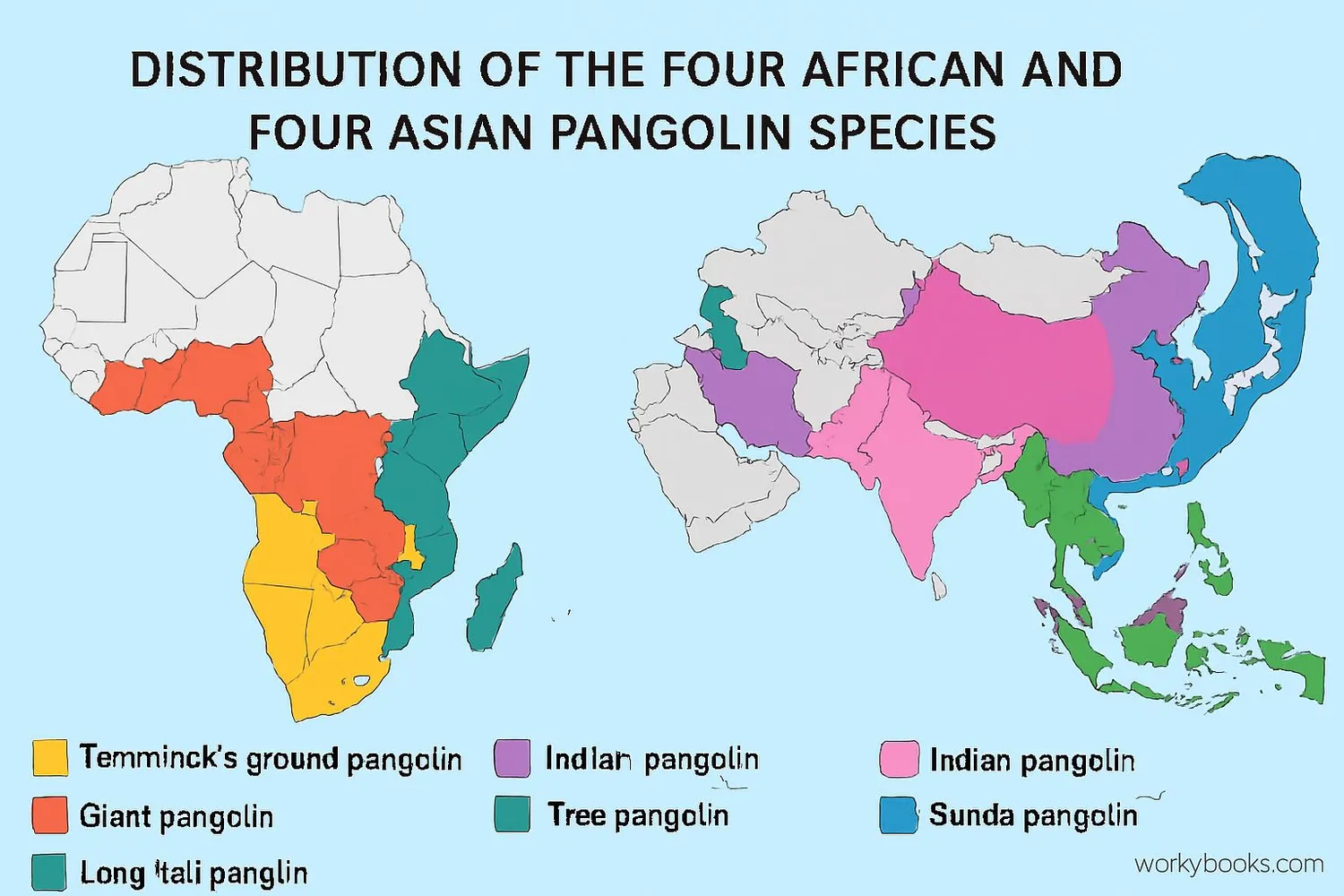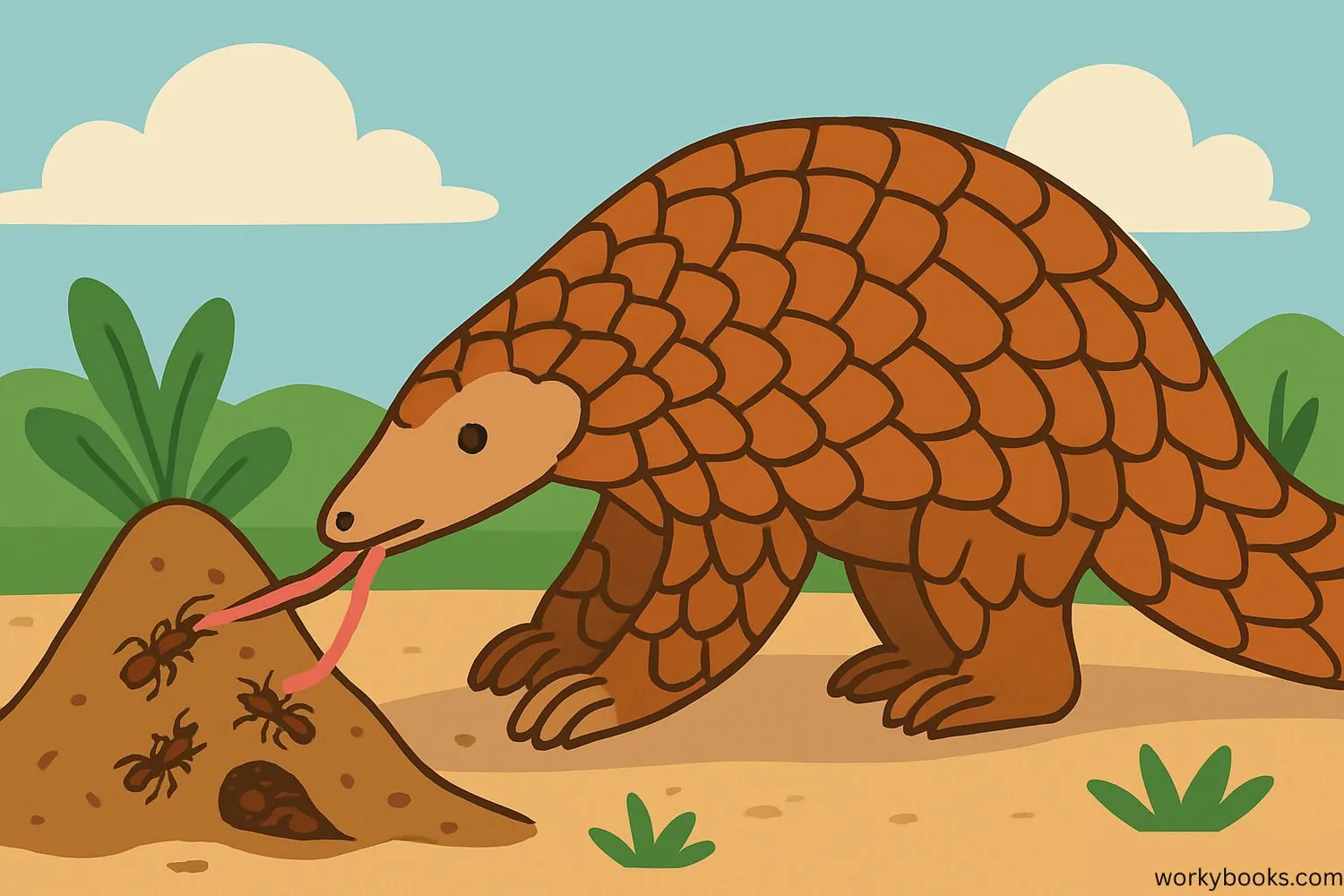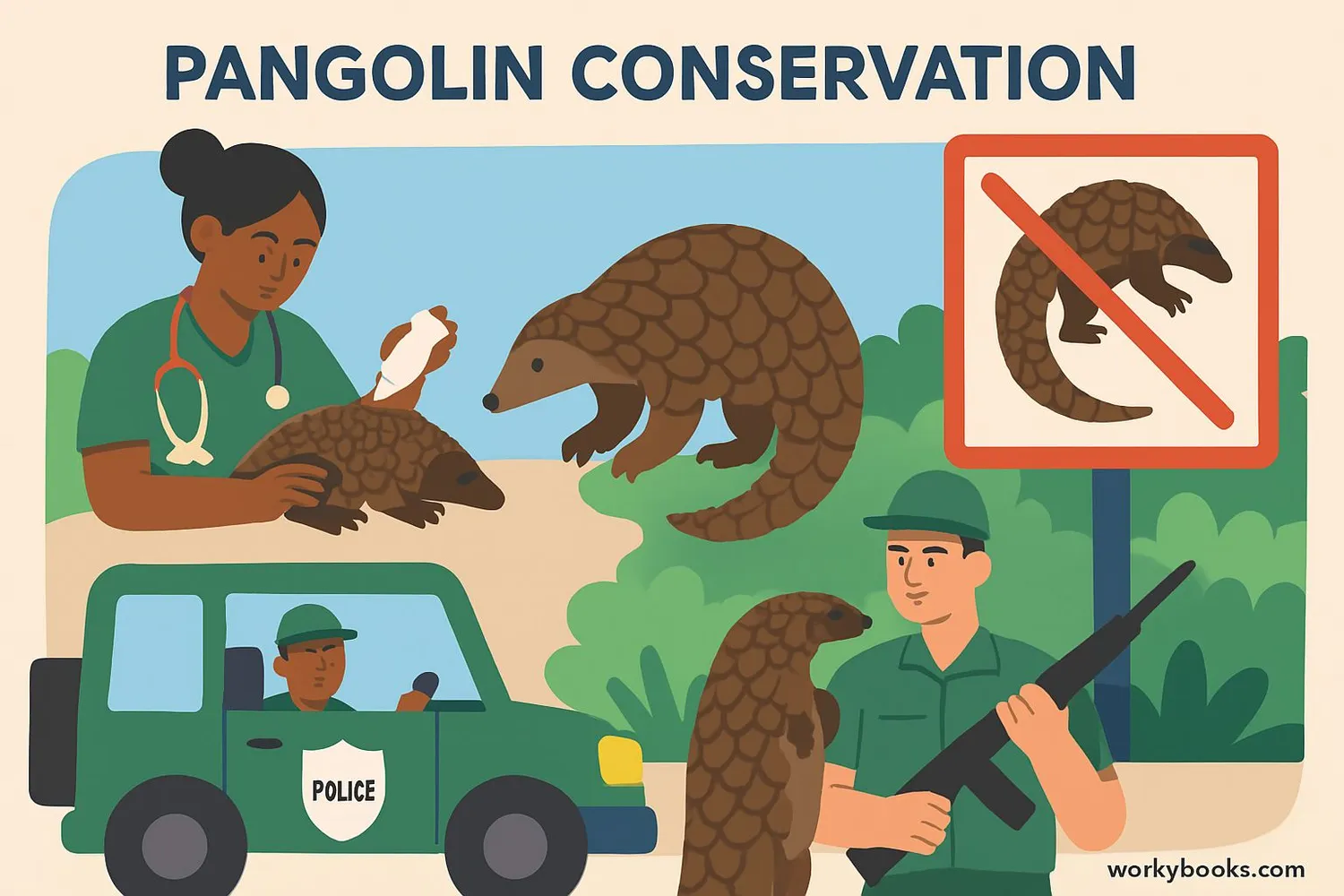Pangolin - Definition, Examples, Quiz, FAQ, Trivia
Discover the world's only scaled mammals and why they need our protection
What is a Pangolin?

Pangolins are unique mammals covered in protective scales made of keratin - the same material as human fingernails! They are sometimes called "scaly anteaters" because they eat ants and termites with their long, sticky tongues.
These amazing creatures are the only mammals completely covered in scales. When threatened, pangolins curl into a tight ball, using their scales as armor to protect themselves from predators.
There are eight different species of pangolin found in Asia and Africa. Sadly, all pangolin species are threatened with extinction due to illegal hunting and habitat loss.
Did You Know?
A pangolin's tongue can be longer than its body when fully extended! This helps them reach deep into ant nests.
Pangolin Species and Habitat

There are eight species of pangolin divided between Africa and Asia:
African Species
Giant Pangolin, Ground Pangolin, White-bellied Pangolin, Black-bellied Pangolin
Asian Species
Indian Pangolin, Philippine Pangolin, Sunda Pangolin, Chinese Pangolin
Pangolins live in diverse habitats including:
• Tropical forests
• Savannas and grasslands
• Thick bush and woodlands
• Some species live in trees while others prefer burrows
The largest species is the Giant Pangolin which can grow up to 1.8 meters (6 feet) long, while the smallest is the Black-bellied Pangolin at about 30 cm (1 foot) long.
Pangolin Diet and Behavior

Pangolins are insectivores, meaning they eat insects. Their diet consists mainly of:
Ants & Termites
Main food source for all pangolin species
Special Tongue
Sticky tongue longer than their body
Nocturnal
Most active at night
Pangolins use their powerful front claws to tear open ant nests and termite mounds. They lack teeth so they swallow small stones that help grind up food in their stomach.
When threatened, pangolins roll into a tight ball, protecting their vulnerable belly. Their scales are so tough that even lions can't bite through them! Some pangolin species can also release a foul-smelling liquid from glands near their tail to deter predators.
Pangolin Protection and Conservation

Pangolins are the world's most trafficked mammals. All eight species are protected by international laws, but they face serious threats:
Illegal Trade
Over 1 million pangolins trafficked in last decade
Habitat Loss
Forest destruction reduces their living space
Endangered Status
All species threatened with extinction
Conservation efforts include:
• Stronger laws against poaching and trafficking
• Habitat protection and restoration
• Rescue centers for injured or orphaned pangolins
• Public education about pangolin protection
• Research to better understand pangolin needs
You can help pangolins by supporting conservation organizations and never buying products made from pangolin scales.
Pangolin Quiz
Test your pangolin knowledge with this fun quiz! Answer all 5 questions to see how much you've learned.
Frequently Asked Questions
Here are answers to some common questions about pangolins:
Fun Pangolin Trivia
Discover some amazing facts about pangolins!
Living Armor
A pangolin's scales make up about 20% of its body weight. When threatened, they can roll into such a tight ball that predators can't penetrate their armor!
Super Tongue
A pangolin's tongue can be longer than its body (up to 40cm/16in)! It's attached near their pelvis and retracts into a special sheath in their chest when not in use.
Insect Eating Machine
A single pangolin can eat up to 70 million insects per year! They use their powerful claws to rip open ant nests and termite mounds, then lap up insects with their sticky tongue.
Trafficking Tragedy
Pangolins are the most trafficked mammals in the world. An estimated 200,000 are taken from the wild each year for their scales and meat, despite international protection laws.

